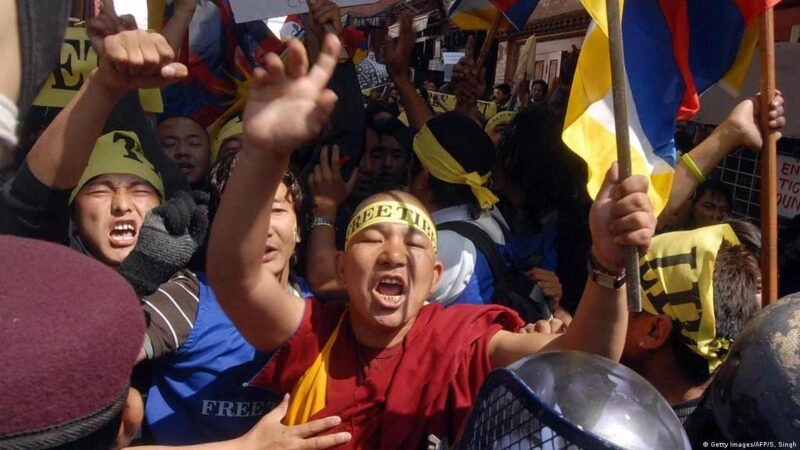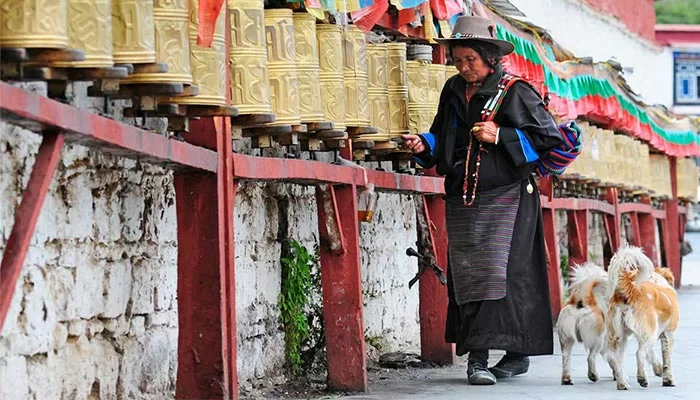Tibetans in Nepal: Caught in the Crosshairs of China’s Pressure on Nepal

Increasing Nepal’s closeness with China has created problems for Tibetan refugees as seen in the statistics from the 2020 UNHCR report, which reported a total of 12,540 Tibetan refugees in Nepal. This is partly due to difficulty in documentation and record-keeping, but also due to other reasons.
In 1955, Beijing and Kathmandu signed a treaty recognizing Tibet as part of China. In the 1960s, Tibetans rebelled against the Chinese government after the CIA began funding the rebellion. However, Nepal tried to suppress it. The Nixon administration ultimately halted support for the rebellion as it did not outweigh the possibility of opening talks with Mao.
Nepal’s crackdown on Tibetan refugees gradually increased and became worse after the death of King Birendra in 2001. China started to develop stronger links to political parties in Nepal to keep the Tibetan refugees in check. In 2008, while the world was focused on the Olympic Games, Tibetans demonstrated their rights in countries like Nepal.
In 2009, China began to develop a financial relationship with Nepal. Beijing promised Nepal loans to develop infrastructure, agriculture, energy and tourism. Beijing also made pledges to alleviate poverty in Nepal, including agricultural training and reduced tariffs. In return, Nepal reiterated the vow to prohibit ‘anti-China or separatist activities’ on its soil.
The ‘One China’ policy has become crucial to the Nepal-China relationship. Even in the current times, China continues to monitor Tibetan movements in Nepal and instructs Nepal’s authorities on how to handle Tibetan events and gatherings. Nepal’s police officers have also said that the Chinese know details about Tibetans’ activities even before they do.
Nepal’s crackdown on its Tibetan refugee population has taken the form of suppressing peaceful demonstrations; celebrations of Tibetan culture and holidays are highly restricted or banned, and met with periods of increased monitoring, reported Le Monde diplomatique. A 2022 Human Rights Watch report claimed that Nepal continues to restrict the free assembly and expression rights of its Tibetan community under pressure from Chinese authorities.



Who are Tibetan refugees?
Tibetan refugees are individuals who have fled their homes in Tibet, which is an autonomous region in China, due to political, religious, and/or cultural persecution, as well as economic and environmental factors.
Many Tibetan refugees have sought asylum in neighbouring countries such as India, Nepal, and Bhutan, where they have established communities and continue to practice their culture and religion. Some have also sought asylum in other countries around the world. Many refugees have reported human rights abuses in Tibet, such as restrictions on freedom of speech, religion, and movement, as well as arbitrary detention and torture.
According to the United Nations High Commissioner for Refugees (UNHCR), there were around 20,000 Tibetan refugees in Nepal as of 2020. Many of these refugees have settled in and around Kathmandu, the capital of Nepal, and have established communities where they continue to practice their culture and religion.
Tibetans in Nepal have faced challenges, including difficulty in obtaining documentation and legal status, as well as restrictions on their freedom of movement and expression. Some have reported harassment and abuse by Nepalese authorities, and there have been instances of refugees being repatriated to China against their will. The Nepalese government has also come under pressure from China to crack down on Tibetan refugees, and there have been reports of restrictions on celebrations of Tibetan culture and holidays and increased monitoring of refugees.
Despite these challenges, many Tibetans in Nepal have been able to establish themselves and create a sense of community in their new home. They have opened businesses, started organizations, and even built monasteries and temples to keep their culture and traditions alive. Some have also been able to travel to India, where they can receive an education


















